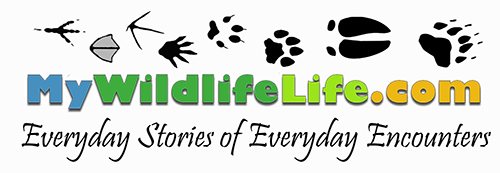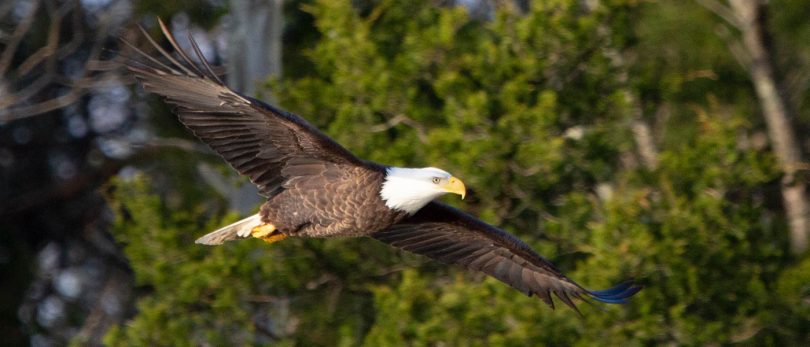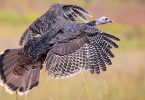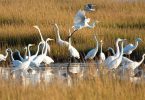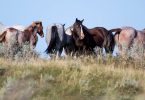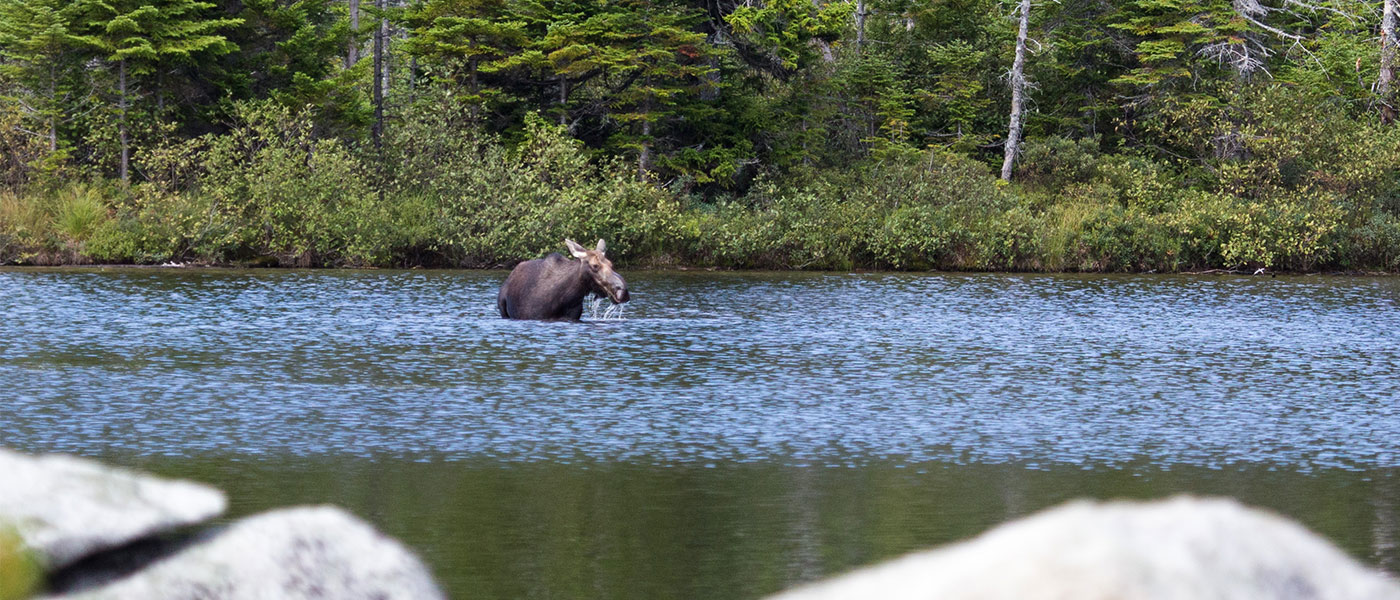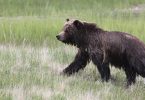There was a time not too long ago that even the thought of seeing a bald eagle in the continental United States was unheard of. You would hear stories from past generations about seeing the eagles and how they disappeared and hadn’t been seen in years.
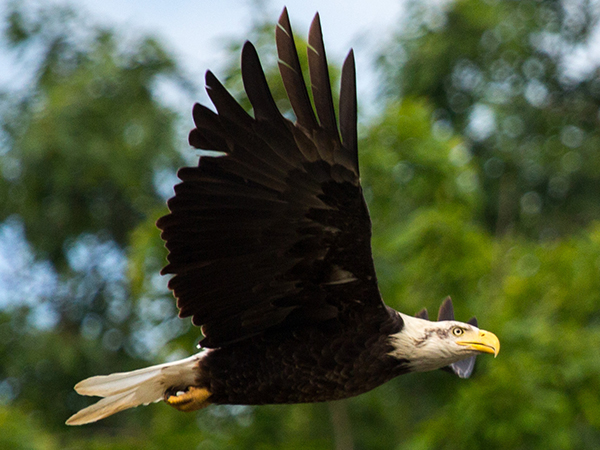
When the bald eagle was selected as our nation’s symbol of freedom in 1782, there were estimated to be over 100,000 nesting pairs across our country. That would make it very possible that you could see an eagle along every shoreline, lake, river, and meadow. I can’t even imagine there being that many and what it must have looked like in the skies.

The decline of the eagles started as the increase in mankind’s presence grew. As humans began to hunt the same food sources the bald eagle populations slowly started to decrease. By the early 1900s, there was a surge in the hunting of waterfowl and other prey which in turn lead to decreased food sources for the eagles.
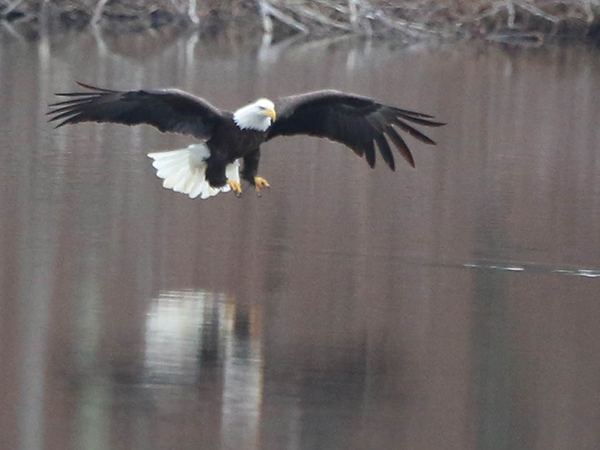
Around the same time as their food source was being taken, the fashion industry’s demand for eagle feathers increased. This lead to a large increase in the hunting of bald eagles and greatly sped up the decline in their numbers.
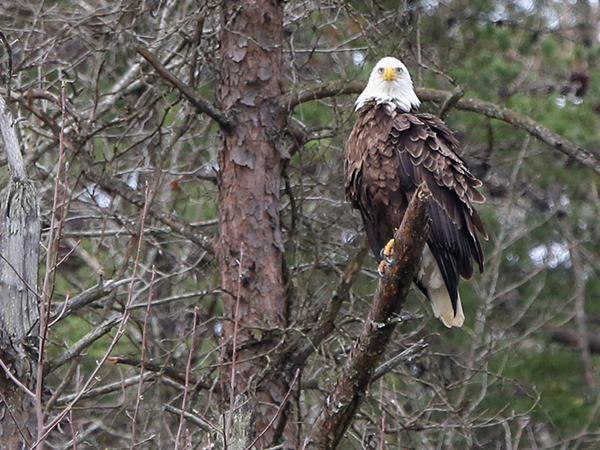
However, the largest hit to the bald eagle population begins to happen around the 1940s with the introduction of dichloro-diphenyl-trichloroethane (DDT). DDT was the first of the modern synthetic insecticides and was very successful in combating insects that carried diseases as well as controlling crop loss to insects. However, it was quickly discovered that the insect world was adapting to become resistant to DDT and that the environmental effect of this pesticide was devastating.
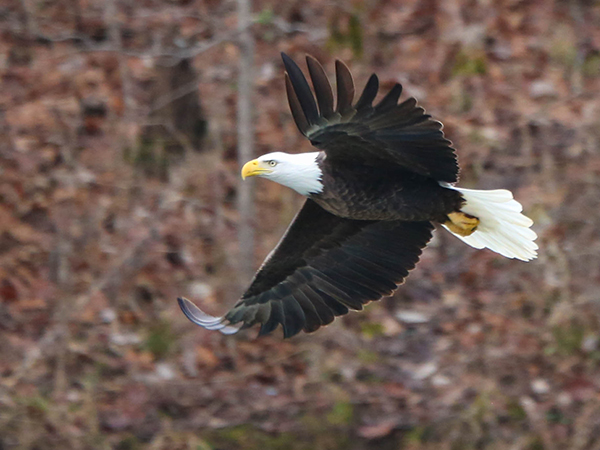
By the 1950s DDT was being found in food sources including fish as the chemical was in the runoff of fields into the waterways. This had created a poisoning of the food chain to include the bald eagle. Adding in the increase in lead poisoning the number of eagles was on a very quick decline during this time.
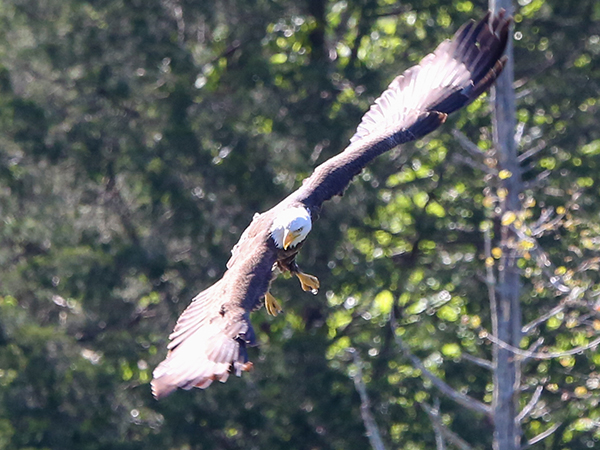
In 1967 the bald eagle was officially listed as ‘endangered’ on the Endangered Species list and even with this knowledge, DDT was not banned by the FDA till 1972 after it had such a huge impact on the population of bald eagles in the United States.
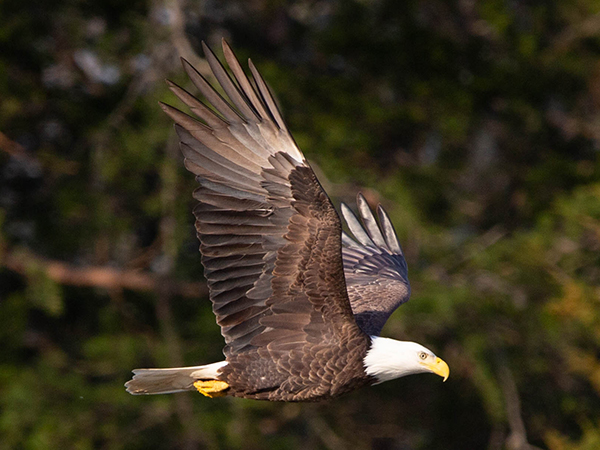
By the time the bald eagle was placed on the Endangered Species list, there were thought to be only about 400 nesting pairs left in the entire country. From over 100,000 down to only 400, now I see why it became like this mysterious creature that you would only hear about but never see. It was always strange to see a bald eagle on coins, shirts, and other merchandise but never actually see one.
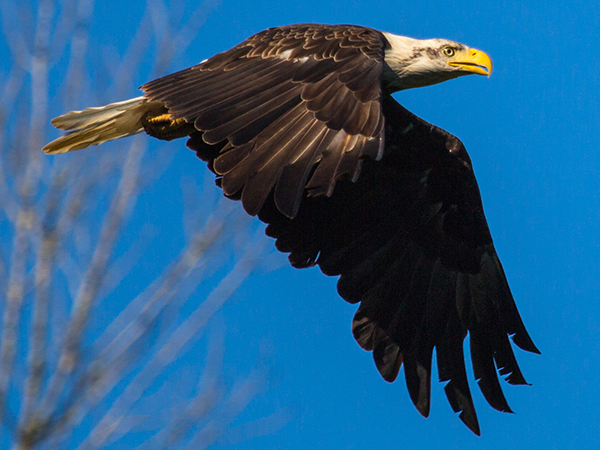
Due to numerous federal acts to help restore this symbol of our nation, the eagle slowly began it’s return to parts of the country.
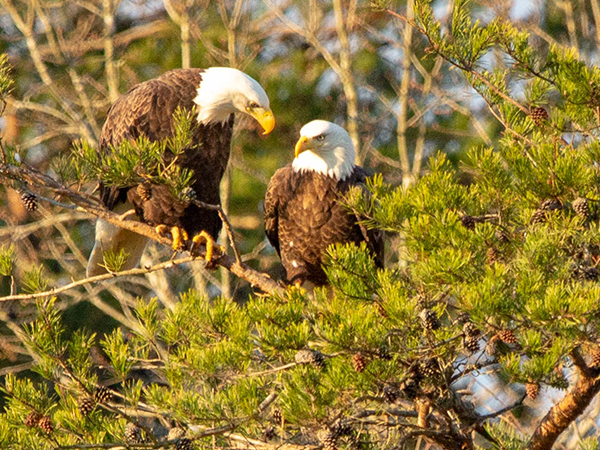
By the late 1990s, I was hearing more and more stories about seeing bald eagles in my area. This made me actually start looking for them when on fishing outings. I remember the first time I screamed “bald eagle” knowing full well that I had seen one flying ahead of us. There was no mistaking the dark body and white head. My stomach turned with excitement as we sped up to see it, only to be doubly disappointed as it was a raven carrying a fast-food bag. I thought then as always, I’m never going to see one.
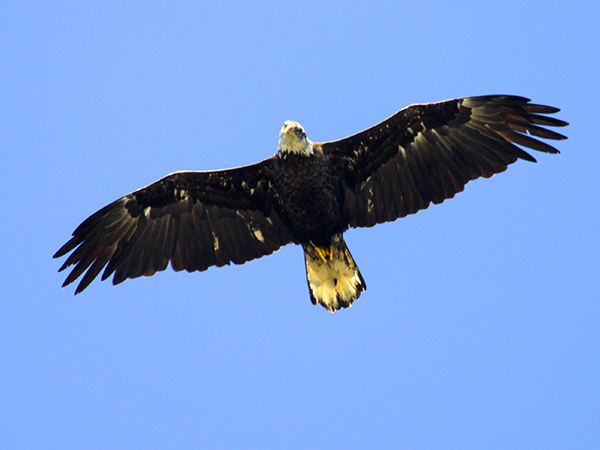
But finally, on one trip to Maine in the early 2000s there it was, a large bird circling overhead we filled the car with gas. I thought I was seeing things till we all agreed that was one.
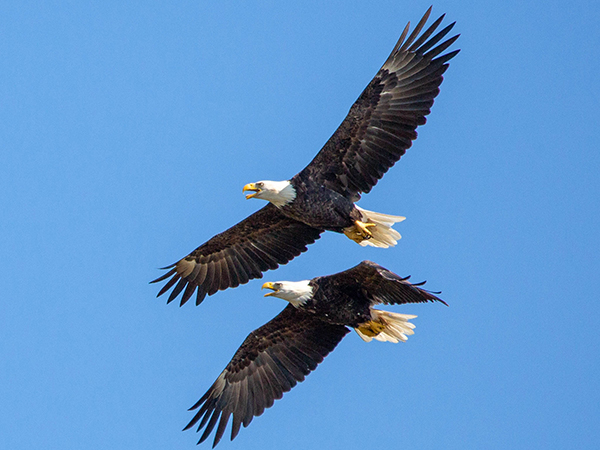
We had heard they were slowly making a come back and the Maine coast was a great place to see them and this was proven to be true over the years. It’s hard not to see a bald eagle in Maine nowadays.
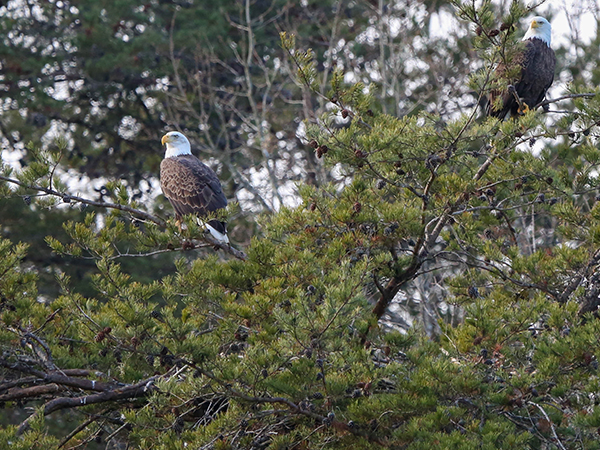
But this past year has proven to be the highlight of the lifelong dream of seeing a bald eagle. This year I had the privilege of watching a nesting pair raise an eaglet and I think that covers all the possible bald eagle bucket list items.
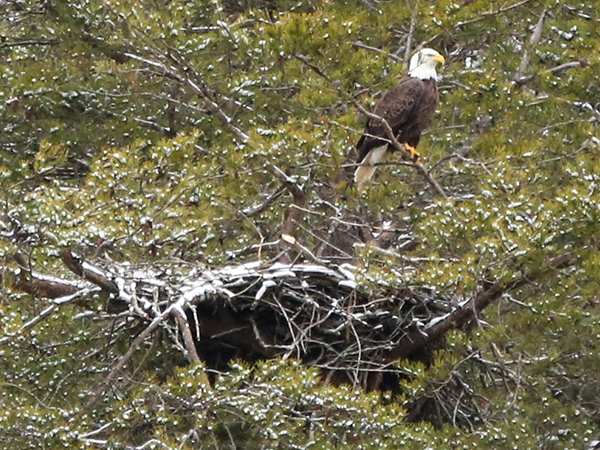
It started a few years ago with seeing one eagle at the lake I spend many a weekend at looking for wildlife. Most times during late fall, winter, and early spring I’m alone at the lake which is why I love it. That one eagle was only there for a few weeks but it was nice to get to actually WATCH an eagle, I mean literally sit and watch him/her for hours.
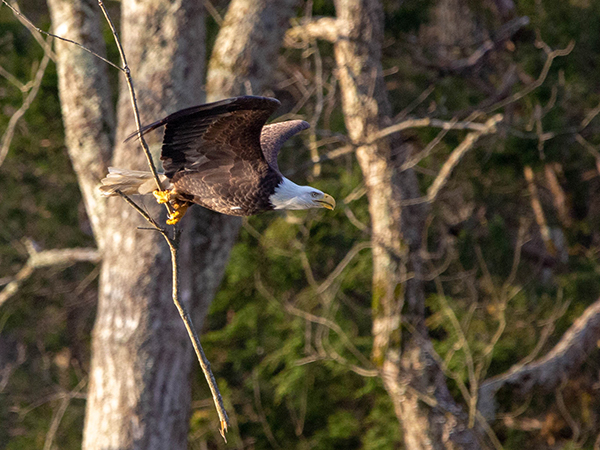
For the next few years, there would be a pair that would winter at the lake so I got do see them from about November through March. This was great as I said I was usually the only one at the lake during these months. Every year I would wish they would stay but they would not. Then came late 2018, it happened. I saw an eagle carrying a stick and it landed in a tree in front of me.

Could it be? Yes, it could. They had picked a tree and were building a nest. I was overcome with excitement at the thought of having a nest being built literally in front of me and in a part of the lake that will be easier to watch than most. This gave even more meaning to my weekend trips to this lake to enjoy Mother Nature’s work and I watched as they built the nest.

By early spring, they had a small nest built and by the first week in March, they were laying in the nest so easy to assume they had eggs. However the next week, we had a really bad ice storm followed by a wind storm and after that day I no longer saw them in the nest but they were still around the lake area. I was so disappointed but crossed my fingers they would try again.
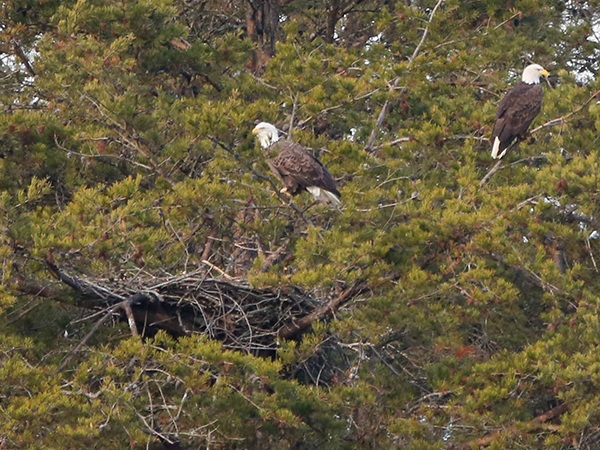
Fast forward to the spring of 2020 and the pair was still hanging out at the lake and building a bigger nest. Around the first week in March laying in the nest began and by early April you could tell they were feeding chicks. This was so exciting.
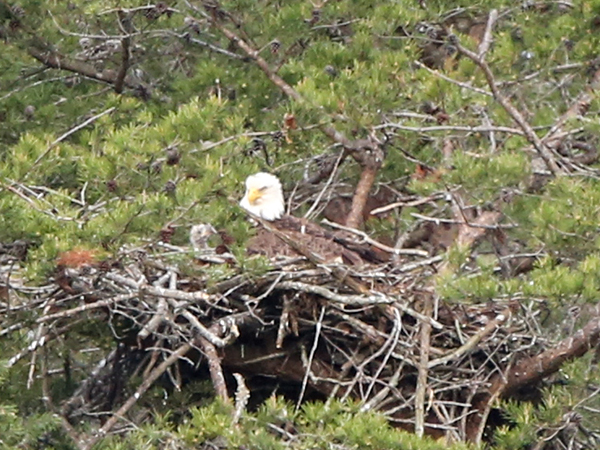
Over the next few weeks, I would sit and watch as the proud parents would come and go but there was no way to see into the nest. From the closest point, you couldn’t even tell there was a nest but that is where I would sit and watch with my camera and binoculars.
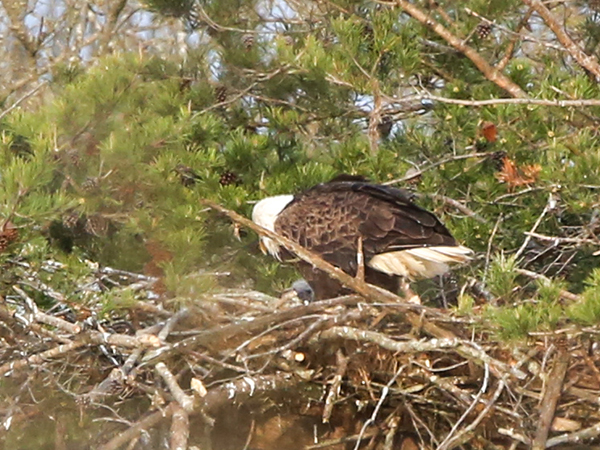
Soon I got my first glimpse of an eaglet. A little gray fuzzy ball moving around and then there were two little creatures moving. At one point I thought I saw three but I was never really sure. Over the next few weeks, I watch as they grow but with few genuine looks at them only quick glimpses of movement. The nest was deep in the pine branches and the chicks were down within the walls of the nest making it difficult to really see what was happening.
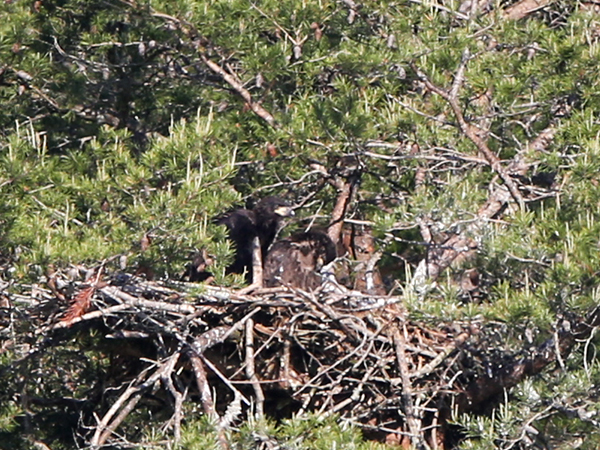
I watched two moving around and would listen to them both call out to mom and dad especially when they would return with a meal. However, as the weeks went on it seemed as if there was only one remaining as I no longer saw two eaglets practicing their fledgling techniques.
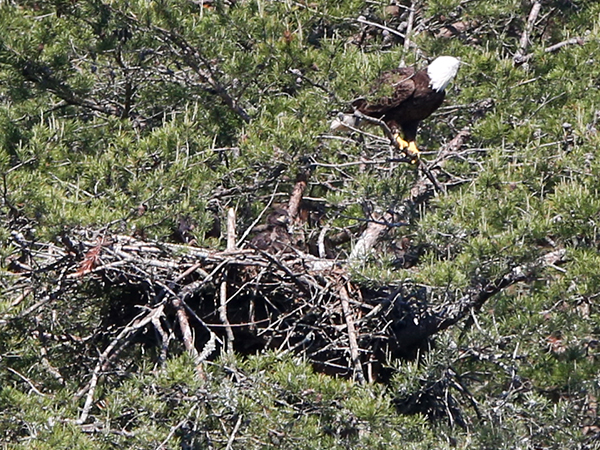
By June the eaglet was ready to go but he was taking his practice flights out of sight of the lakeshore. He had jumped back into the denser woods but by his screams, it was obvious he was still alive and well.
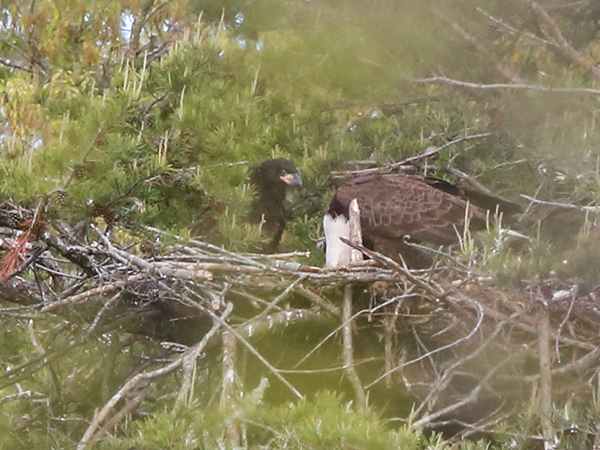
Then early July came and I took a drive to the lake, as I get to the very first stop you can see the lake I look and see an eagle on the ground by the boat launch. It’s early morning just after sunrise and no one is there yet but the eagle. As I drive closer it’s very apparent that this is in fact the fledgling. He turns and I smile as I take his picture thinking of how great it is to see him this close. He’s really not that scared and as I approach a little closer in the car he simply hops a few hops and flies over to the rocky dam and perches there.
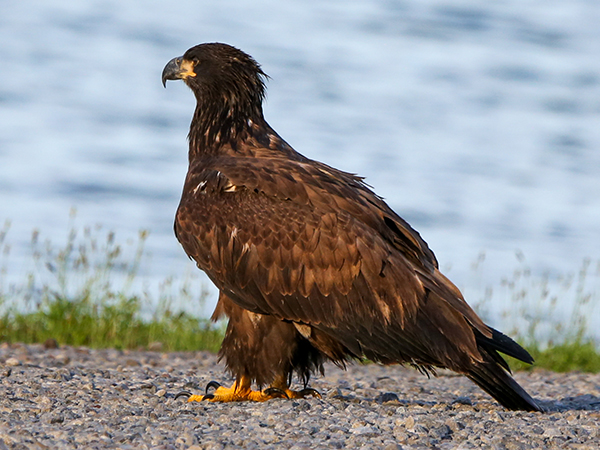
I say a few words to him as I do most wildlife that wants to listen. Thank him for his time and drive off to see what other creatures I can find.
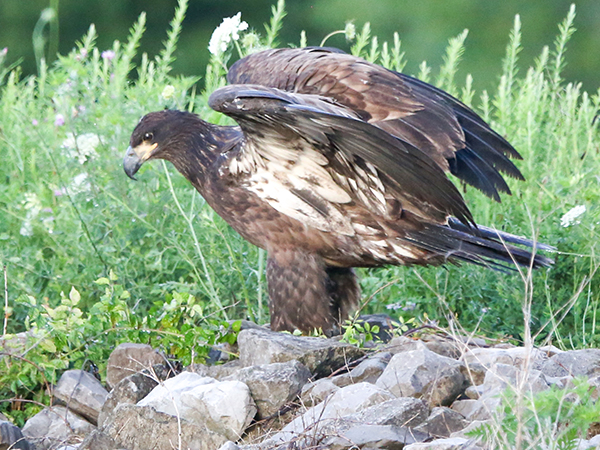
Today it’s estimated there are over 10,000 nesting pairs in the United States lower 48 which is an amazing number to think about given there was less than 500 not that long ago. This is one great success story that can be shared with future generations on how changing our ways can make a difference in the world.
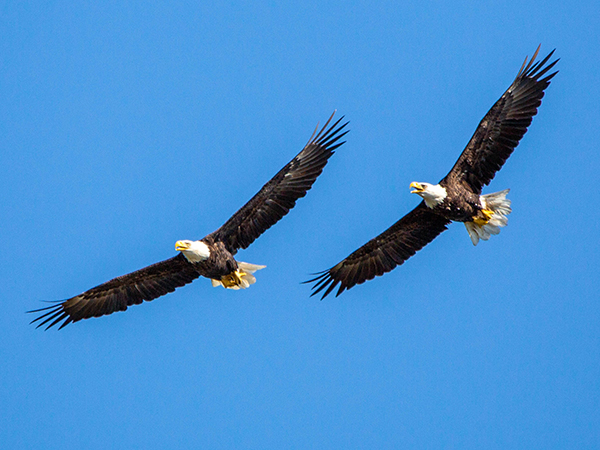
If you are looking for a great place to spot eagles, I can say that Assateague Island National Seashore is one of those places. Once I saw five eagles circling at the same time. As mentioned before the Maine coast is another great place but it’s great for a lot of reasons besides eagles. Feel free to share your places to spot bald eagles or if you have a story of the first time you saw one, I would love to hear it.
I can honestly say that when I was a kid and heard the stories of the majestic symbol of freedom I never in a million years thought I would be able to thank a fledgling for sharing his world with me. It ends up it wasn’t a million years only about forty.
